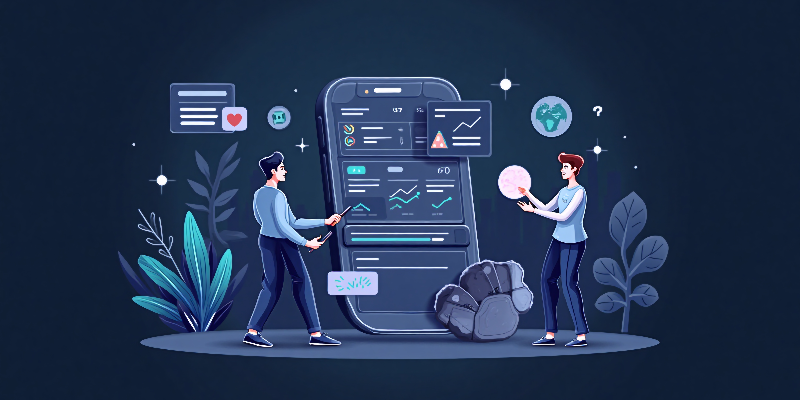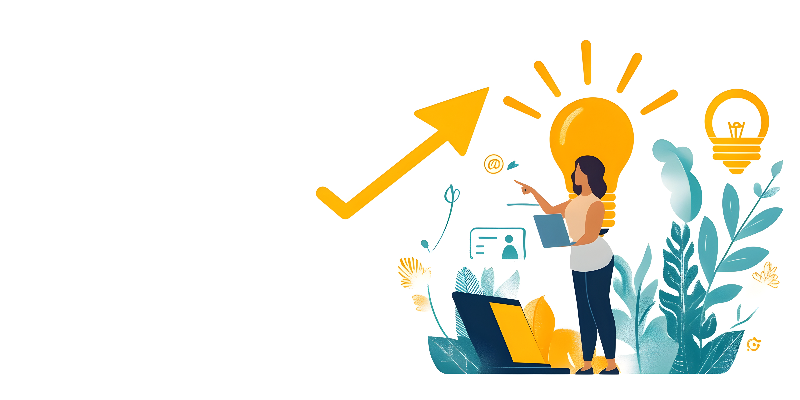

In today's hyper-competitive digital landscape, businesses are constantly searching for sustainable ways to drive growth and maintain market relevance. While traditional marketing strategies and product development approaches continue to evolve, one methodology has consistently proven its worth across industries: user-centered design. The business benefits of user-centered design extend far beyond aesthetic appeal, fundamentally transforming how companies approach product development, customer satisfaction, and revenue generation.
User-centered design isn't merely a design philosophy—it's a strategic business approach that places users at the core of every decision-making process. Companies that embrace this methodology often discover that understanding their users' needs, behaviors, and pain points becomes the cornerstone of sustainable business growth. Research from the Design Management Institute reveals that design-driven companies outperform the S&P 500 by 219% over ten years, demonstrating the tangible impact of prioritizing user experience in business strategy.
User-centered design represents a fundamental shift from product-centric to customer-centric thinking. This approach involves systematic research, iterative testing, and continuous refinement based on actual user feedback and behavior patterns, unlike traditional design approaches that rely heavily on assumptions. User-centered design grounds every decision in empirical evidence about user preferences and behaviors.
The methodology encompasses several key stages that work together to create a comprehensive user understanding:
Companies implementing user-centered design principles typically experience three major benefits: improved customer satisfaction scores, reduced development costs through early problem identification, and faster time-to-market for new products. These outcomes directly correlate with enhanced business performance and competitive advantage in crowded marketplaces.

Design thinking for growth represents a structured approach to innovation that combines creative problem-solving with analytical business strategy. This methodology enables organizations to identify untapped market opportunities while simultaneously addressing existing customer pain points. By fostering a culture of empathy-driven innovation, businesses can develop solutions that customers didn't even know they needed.
The design thinking process involves five distinct phases that build upon each other:
Companies that successfully integrate design thinking for growth often report increased innovation rates, improved employee engagement, and stronger customer loyalty metrics.
IBM's transformation serves as a compelling example of design thinking's business impact. After implementing design thinking across its organization, IBM reported $18.6 million in cost avoidance and revenue generation. Their approach involved training over 30,000 employees in design thinking methodologies, demonstrating the scalability of this approach for large enterprises.
Similarly, PepsiCo's use of design thinking for growth led to the development of successful product lines and marketing campaigns. By focusing on deep customer empathy and iterative testing, they achieved significant market share gains in competitive beverage categories. These real-world examples illustrate how design thinking for growth translates theoretical concepts into measurable business results.
UX for businesses extends beyond creating visually appealing interfaces—it encompasses the entire customer journey and interaction ecosystem. Exceptional user experience design directly influences customer acquisition costs, lifetime value, and overall profitability. Research from Forrester indicates that every dollar invested in UX returns between $30-100, making it one of the highest ROI activities in business development.
The business benefits of user-centered design become particularly evident when examining customer retention metrics. Companies with superior user experience design typically achieve customer retention rates 15-20% higher than industry averages. This improvement translates directly to increased lifetime value and reduced acquisition costs, creating sustainable competitive advantages.
Consider Amazon's relentless focus on user experience optimization. Their one-click purchasing system, personalized recommendations, and streamlined checkout processes contribute significantly to their market dominance. These UX innovations for businesses didn't happen accidentally—they resulted from systematic user research, testing, and refinement based on customer behavior data.
Netflix provides another excellent example of UX for businesses driving growth. Their recommendation algorithm, intuitive interface design, and seamless cross-platform experience contribute to industry-leading retention rates. By continuously optimizing user experience based on viewing behavior and feedback, Netflix maintains competitive advantages in the crowded streaming market.

The business benefits of user-centered design manifest across multiple organizational metrics, from customer satisfaction scores to revenue growth rates. Companies implementing comprehensive user-centered design strategies typically experience measurable improvements in key performance indicators within 6-12 months of implementation.
Organizations track success through various metrics that demonstrate tangible business impact:
These improvements correlate directly with increased word-of-mouth marketing and organic customer acquisition, creating sustainable competitive advantages that compound over time.
Conversion rate optimization represents another area where the business benefits of user-centered design become immediately apparent. E-commerce companies implementing user-centered design principles often achieve conversion rate improvements ranging from 200-400%. These gains result from systematic identification and elimination of user friction points throughout the customer journey.
The business benefits of user-centered design also extend to operational efficiency. By identifying user needs early in the development process, companies reduce costly late-stage revisions and feature modifications. This approach typically results in 25-50% reduction in development time and associated costs, directly impacting bottom-line profitability.
Different industries leverage design thinking for growth in unique ways, adapting core principles to sector-specific challenges and opportunities. Healthcare organizations use user-centered design to improve patient outcomes while reducing operational costs. Financial services companies apply these principles to enhance customer trust and streamline complex processes.
The automotive industry provides compelling examples of UX for businesses driving innovation. Tesla's success stems partly from their user-centered approach to vehicle design and software development. Their over-the-air updates, intuitive interface design, and seamless integration between hardware and software demonstrate how user-centered design principles can disrupt established industries.
In the technology sector, companies like Apple have built entire business models around superior user experience design. Their design philosophy prioritizes simplicity, intuitive functionality, and emotional connection with users. This approach has generated extraordinary customer loyalty and premium pricing power, demonstrating the long-term business benefits of user-centered design.
Airbnb's platform success illustrates how design thinking for growth can create entirely new market categories. By focusing intensively on user needs—both hosts and guests—they developed solutions that traditional hospitality companies hadn't considered. Their user-centered approach to trust, communication, and booking processes enabled rapid global expansion and market dominance.
Chennai's growing technology and business ecosystem has created significant demand for specialized design services. Companies seeking to implement user-centered design principles often partner with experienced agencies to accelerate their transformation journey. A UI/UX design company in Chennai typically offers comprehensive services including user research, interface design, and usability testing.
The local market has witnessed remarkable growth in design-focused businesses, with many organizations recognizing the competitive advantages of superior user experience. This growth has created opportunities for specialized service providers, including established graphic design company in Chennai operations and emerging digital design specialists.
Businesses in Chennai increasingly understand that partnering with the right design company in Chennai can significantly impact their market success. These partnerships often result in improved customer engagement, enhanced brand perception, and measurable business growth. Local companies like Bud have established strong reputations by delivering results-driven design solutions that align with business objectives.
Successful implementation of user-centered design requires systematic organizational change and strategic planning. Companies must invest in proper training, establish appropriate processes, and create cultural alignment around user-focused decision-making. This transformation typically requires 6-18 months depending on organizational size and complexity.
The implementation framework involves several critical components that ensure sustainable adoption:
This research informs all subsequent design and development decisions, ensuring alignment between business objectives and user requirements while maintaining flexibility for evolving market conditions.
Leadership commitment proves crucial for successful user-centered design implementation. Organizations with strong executive support for design thinking for growth typically achieve better results than those treating it as a departmental initiative. This support manifests through resource allocation, process integration, and performance measurement alignment.

The future business landscape will likely favor organizations that excel at understanding and serving user needs. As markets become increasingly competitive and customer expectations continue rising, the business benefits of user-centered design will become even more pronounced. Companies that establish strong design capabilities today position themselves for sustained competitive advantage.
Emerging technologies like artificial intelligence and machine learning will enhance user-centered design capabilities, enabling more sophisticated personalization and predictive user experience optimization. Organizations that combine these technological capabilities with strong design thinking foundations will likely achieve superior business performance.
The convergence of design thinking for growth with data analytics creates unprecedented opportunities for business optimization. Companies can now measure user behavior in real-time, test design variations systematically, and optimize experiences based on concrete performance data. This evolution transforms UX for businesses from an art to a science, delivering more predictable and scalable results.
User-centered design represents far more than a design methodology—it's a fundamental business strategy that drives sustainable growth through deep customer understanding and systematic innovation. The business benefits of user-centered design extend across all organizational functions, from product development to customer service to marketing effectiveness.
Companies that embrace design thinking for growth position themselves for long-term success in increasingly competitive markets. By prioritizing user needs and systematically optimizing experiences, these organizations build stronger customer relationships, achieve operational efficiencies, and create sustainable competitive advantages.
The evidence supporting UX for businesses as a growth driver continues mounting, with successful implementations across industries and geographies. Organizations that hesitate to adopt user-centered design principles risk falling behind competitors who understand its strategic importance. The question isn't whether to implement user-centered design, but how quickly and effectively organizations can transform their approaches to prioritize user needs in every business decision.